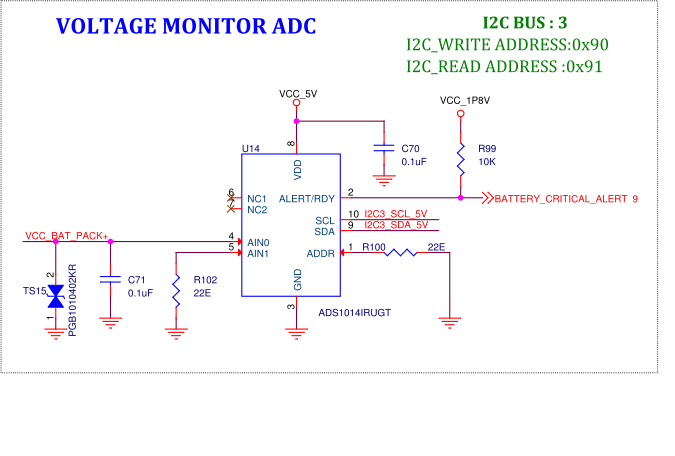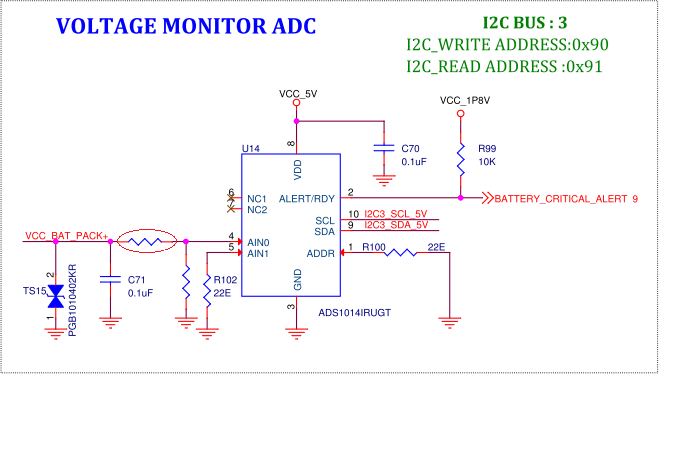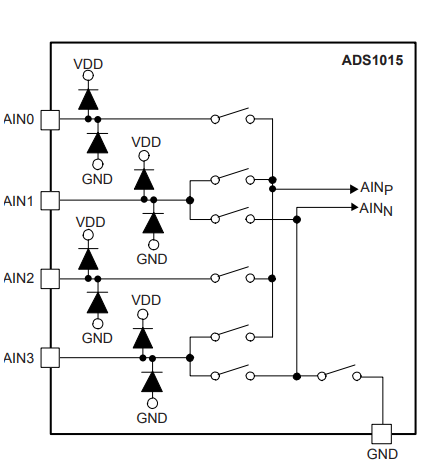Hi ,
I have used the part ADS1014 to measure the Li-ion battery voltage level(4.2V) . It is worked fine and we have done production of 50 boards as initial build. out of 10 boards two boards get failed . In one board ADC read value is 600mV when the voltage at analog input pin 4.2V . In another board, ADC read value is 4.9V when voltage at analog input mode is 4.2V
I have configured to use in single ended mode and FSR is set 6.144V. I have used the TVS diode and 0.1uF at the analog input pin to for ESD and transition production. I am not clear what is happening inside the chip. we are started to deliver this product to our end customer. can you please help to fix this issue ASAP.
Below is the snapshot of the schematics. VCC_BAT_PACK+ is coming from the Li-ion battery and its maximum voltage is 4.2V





